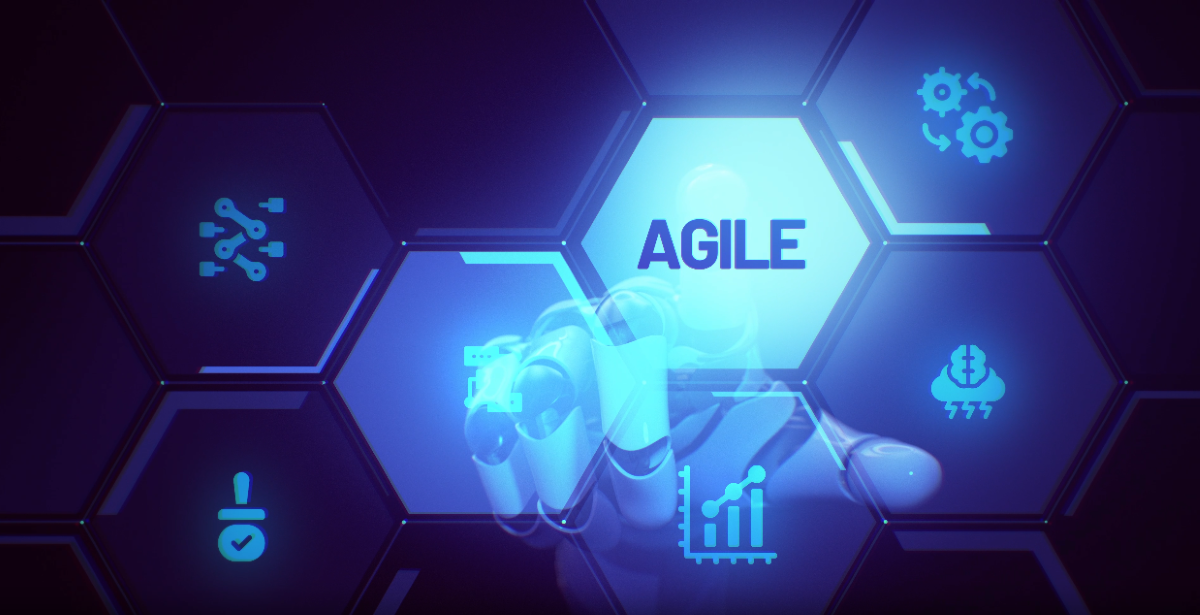Monday, April 14, 2025 4 min read Industry Insights
Adapting DevOps and Agile in a Virtual Development Environment
Explore how DevOps and agile practices help virtual development teams streamline project delivery, continuous integration, and remote collaboration.

What are Agile and DevOps?
Agile is a development methodology that focuses on collaboration, adaptability, and delivering customer value through iterative cycles. On the other hand, DevOps merges development and IT operations to automate and streamline software deployment, ensuring faster and more reliable releases.
Together, Agile and DevOps can significantly enhance productivity, especially when implemented in a virtual environment. But with virtual work becoming the norm, how do we successfully combine these two approaches remotely?

Understanding the Need for Agile Evolution
As customer needs change and market dynamics evolve, businesses must pivot quickly to remain competitive. Agile’s core principle—adaptability—has never been more essential. However, in virtual environments, challenges like communication gaps and team cohesion can hinder progress. That’s why the evolution of Agile, through continuous feedback loops and rapid iteration, is key to staying ahead.

The Importance of DevOps in Modern Development
DevOps is vital because it promotes automation, collaboration, and continuous improvement—crucial elements for any virtual team. In a typical DevOps setup, development teams and operations teams work hand-in-hand to improve speed and quality. But for remote teams, that collaboration needs to extend virtually, across time zones and geographical boundaries. When Agile and DevOps are integrated, the result is a faster, more efficient development pipeline that delivers value consistently.
Agile Frameworks and Methodologies
There are several Agile frameworks that teams can use to adapt Agile principles to their workflow. Here’s a brief look:
- Scrum: Emphasizes teamwork and accountability. Scrum is ideal for teams that can work in short, iterative cycles, with clearly defined roles.
- Kanban: Focuses on visualizing workflow and limiting work in progress, making it ideal for teams looking to optimize flow and reduce bottlenecks.
- Extreme Programming (XP): A technical approach to Agile, emphasizing practices like pair programming and continuous integration. It’s great for teams focused on high-quality, customer-centric code.
Agile methodologies, when adapted to a virtual environment, enable remote teams to stay on track and meet tight deadlines. These frameworks allow teams to collaborate efficiently, even when they’re dispersed across different locations.

Operating Models for Virtual Development Environments
When adapting Agile and DevOps in virtual environments, team dynamics shift. Communication becomes even more crucial. Virtual teams often rely heavily on digital tools to stay connected. Here are some models for virtual team success:
- Collaborative Pod Model: Small, cross-functional teams (or “pods”) work independently on specific product features. This model promotes collaboration, autonomy, and quick decision-making.
- Feature-Based Teams: Each team owns a feature across its lifecycle, from concept to delivery. This model ensures that team members have complete ownership and responsibility for their work.
These operating models help virtual teams remain agile, productive, and aligned with the business’s overall goals.
Tools and Technologies Supporting DevOps and Agile
For Agile and DevOps to work efficiently in virtual environments, teams need the right tools to support collaboration, project management, and continuous deployment. Here are some essential tools:
- Project Management Tools: Jira, Asana, and Trello help teams manage tasks and maintain visibility. These tools are essential for tracking progress and keeping everyone aligned on goals.
- Collaboration Tools: Microsoft Teams, and Zoom allow teams to communicate in real time, share files, and hold meetings, regardless of time zones or location.
- Continuous Integration and Deployment (CI/CD): Jenkins, GitLab, and CircleCI help automate the deployment process, ensuring that code is tested, integrated, and deployed quickly and reliably.
With the right set of tools, virtual teams can maintain the agility and speed needed to succeed.

Implementing Agile and DevOps in Virtual Development Environments
Implementing Agile and DevOps in a virtual environment isn’t without its challenges. However, by adhering to best practices, teams can overcome these obstacles:
Establish Clear Goals and Expectations
In remote environments, clear communication is paramount. Teams should align on goals, timelines, and responsibilities upfront to avoid misunderstandings.
Foster a Culture of Collaboration
Encourage continuous communication between developers, operations teams, and other stakeholders. Regular meetings, standups, and feedback loops keep the momentum going.
Emphasize Continuous Learning
Remote work allows teams to experiment with new ideas without the constraints of being in an office. Encourage team members to try out new tools, methods, and processes, fostering a culture of growth and adaptation.
Provide Training and Skill Development
Provide ongoing learning opportunities, whether it’s through formal training sessions or on-the-job coaching. This is especially important as new tools, technologies, and methodologies emerge.
The Future of Agile and DevOps
Looking ahead, the integration of AI and machine learning is expected to enhance both Agile and DevOps. These technologies can automate repetitive tasks, analyze data for better decision-making, and improve product quality. Additionally, industries outside of software, such as healthcare and marketing, are increasingly adopting Agile principles to drive innovation and responsiveness.
Moreover, Sustainability and Ethical Agile will likely gain traction as businesses focus on the environmental and social impacts of their work, making Agile more customer and socially responsible.
Conclusion
Adapting DevOps and Agile in virtual development environments is a game-changer. These methodologies empower teams to stay flexible, responsive, and efficient—essential qualities in today’s fast-paced, remote-first world. With the right tools, a collaborative culture, and a commitment to continuous improvement, your virtual team can thrive. The future of software development is agile, and the future is virtual—are you ready to adapt?
Related Article: How Agile for Project Management is Implemented in Virtual Development Teams